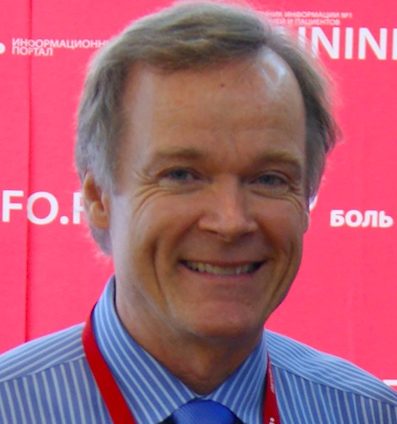Dr. Hunter Hoffman Director
The Virtual Reality Research Center
Human Photonics Lab
University of Washington

Hunter Hoffman is Director of the Virtual Reality Research Center at the Human Photonics Lab at the University of Washington in Seattle. He is a research scientist in Mechanical Engineering, and is also affiliate faculty in Radiology and Psychology at the UW in Seattle. After pre-graduate research at Princeton University, Hoffman became the graduate student of Elizabeth Loftus, the world’s leading expert on eyewitness memory. After getting his Ph.D. from Loftus at the University of Washington on the creation of false memories, Hoffman began conducting studies systematically exploring the illusion of presence in virtual reality, at the Human Interface Technology Laboratory (HITLab) at the University of Washington, in 1993. Although initially hired to explore military applications, Hoffman became intrigued by the clinical potential of using virtual reality to help people. In one of the early clinical uses of VR, in 1995, Hoffman created SpiderWorld, and helped UW clinical therapist Al Carlin use VR to treat Dr. Carlin’s remarkably severe spider phobia patient. The patient, nicknamed Miss Muffet, underwent a surprisingly profound improvement. After only ten one hour VR exposure therapy sessions in SpiderWorld, the patient was able to hold a live tarantula with little anxiety (see Scientific American Frontiers PBS documentary SPIDERS!, and Carlin, Hoffman et al., 1996). Hoffman was intrigued by this initial clinical experience success (as the VR expert of a clinical team) and he subsequently helped another clinical researcher from Manhattan develop a graded exposure simulation of Sept 11th attacks on the World Trade Center, which the therapist used to treat civilian post-traumatic stress disorder (Difede and Hoffman, 2002; Difede et al., 2007; 2013). Hoffman has recently helped another group of therapists explore using VR to enhance Marsha Linehan’s Dialectical Behavioral Therapy mindfulness skills learning technique (in collaboration with Marsha Linehan from the University of Washington, Seattle).
In 1997, Hoffman originated the technique of using immersive virtual reality for pain distraction of severe burn patients, in collaboration with clinical psychologist David Patterson from the University of Washington. Burn patients report large reductions in pain while using VR during painful medical procedures including burn wound cleaning of U.S. soldiers (Maani, Hoffman et al., 2011), and wound cleaning of children with large severe burn injuries (Hoffman, Meyer et al., in preparation). fMRI brain scan studies show large reductions in pain-related brain activity during virtual reality (Hoffman et al., 2004), and another laboratory brain scan study showed that VR reduced laboratory pain as much as a moderate dose of hydromorphone, Hoffman et al., 2007). Hoffman and colleagues Jeff Magula and Eric Seibel designed and built the first magnet friendly (fiberoptic) wide field of view “photonic” virtual reality goggles that could be used in a brain scanner. And they developed the “Magula arm”, a device that holds VR goggles near the burn patient, so the patients don’t have to wear a VR helmet (burn patients often have burns on their faces or heads). Hoffman also designed SnowWorld, the first virtual reality world for pain distraction, which has been used in most of the early research on VR analgesia, worldwide. SnowWorld went on exhibit at the Smithsonian Cooper Hewitt National Museum of Design Triennial in Manhattan, and the Boston Museum of Contemporary Art. There is currently a multibillion dollar investment in finally commercializing virtual reality technology, making VR therapy much more widely available. Hoffman has appeared on a number of scientific news stories, including Rock Center with Brian Williams, PBS News Hour (2017), BBC, Scientific American Frontiers with Alan Alda, Scientific American Magazine (2004), and Scientific American Mind. He was identified as one of the 50 people most likely to influence the next 10 years, by FastCompany.com.
